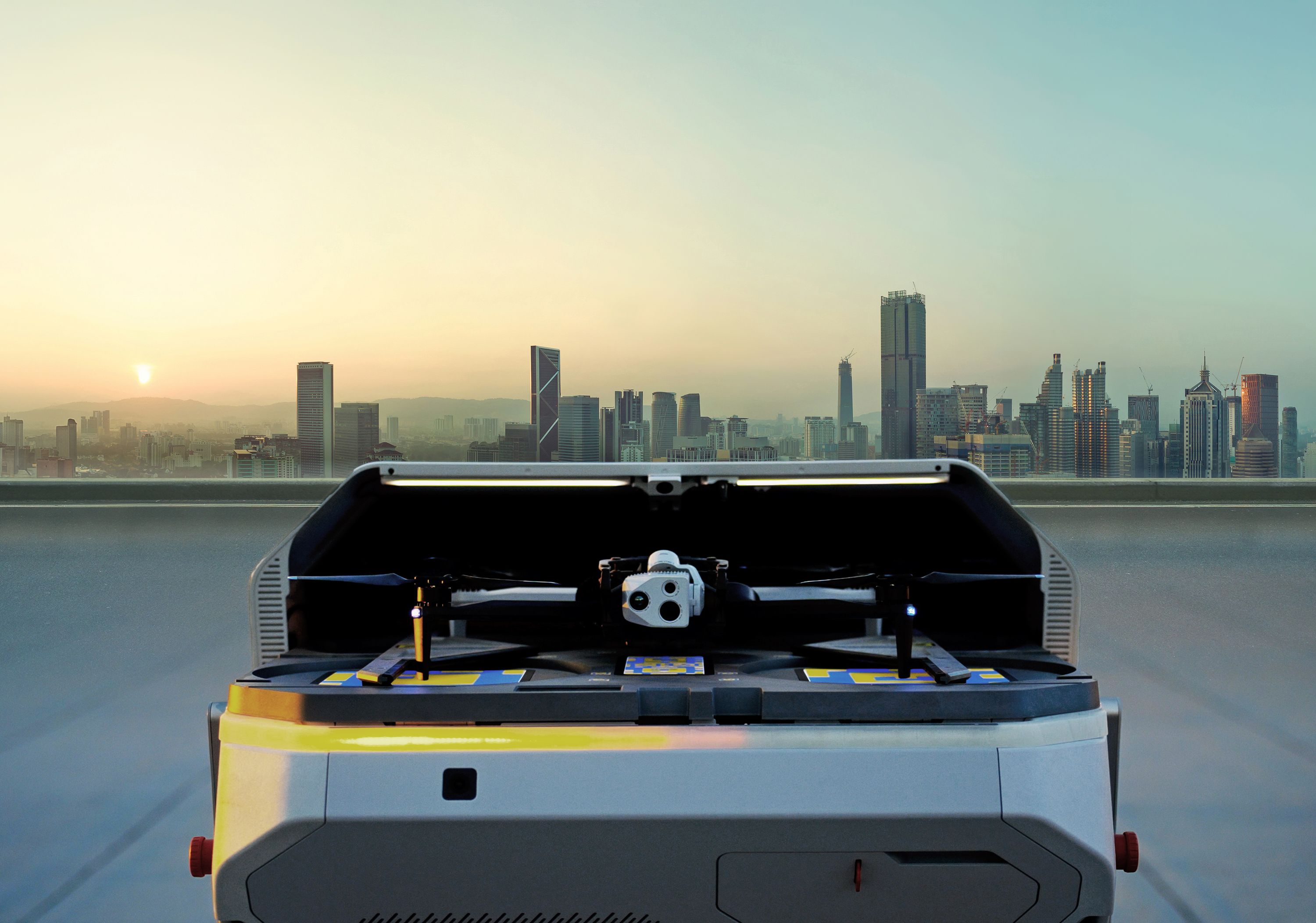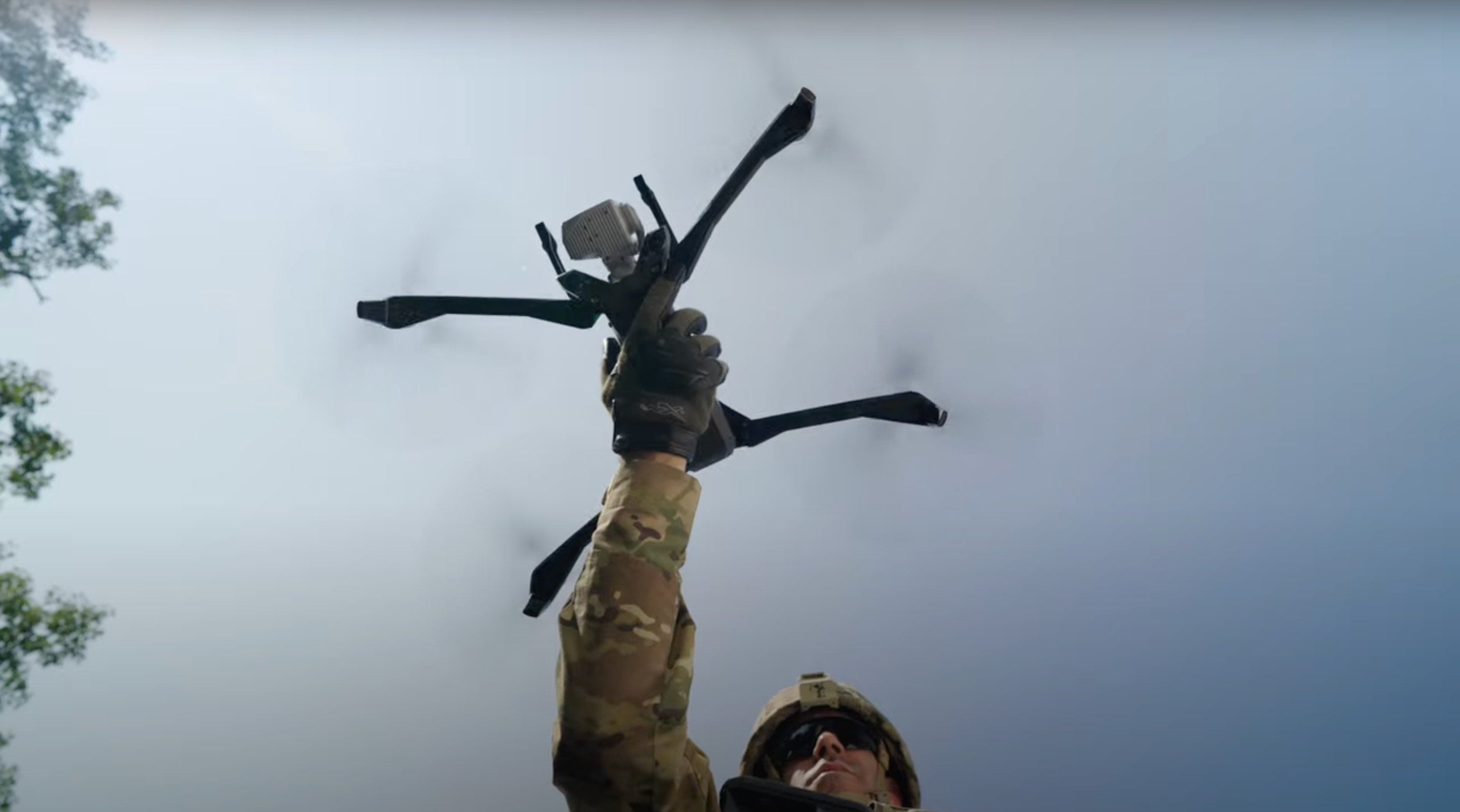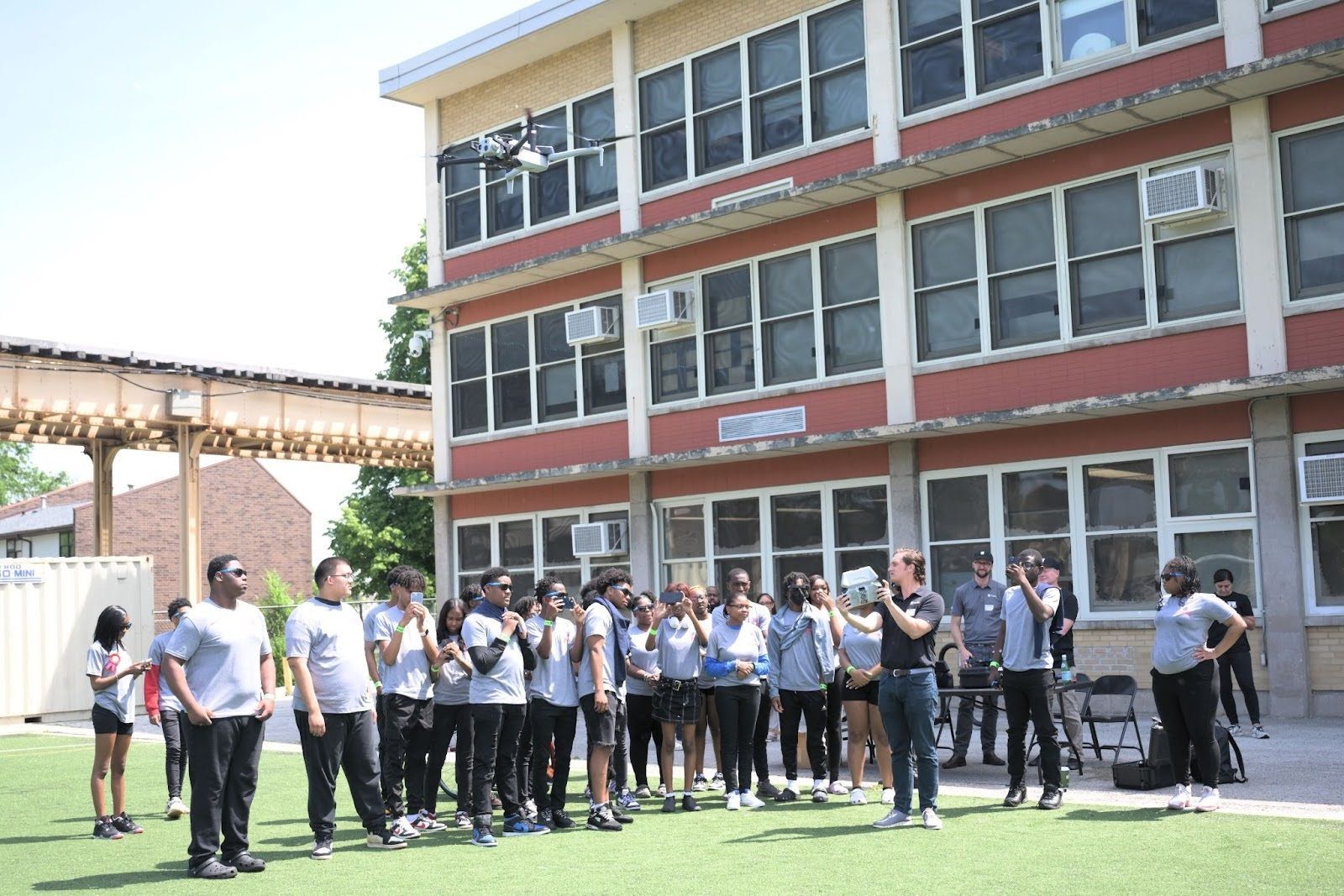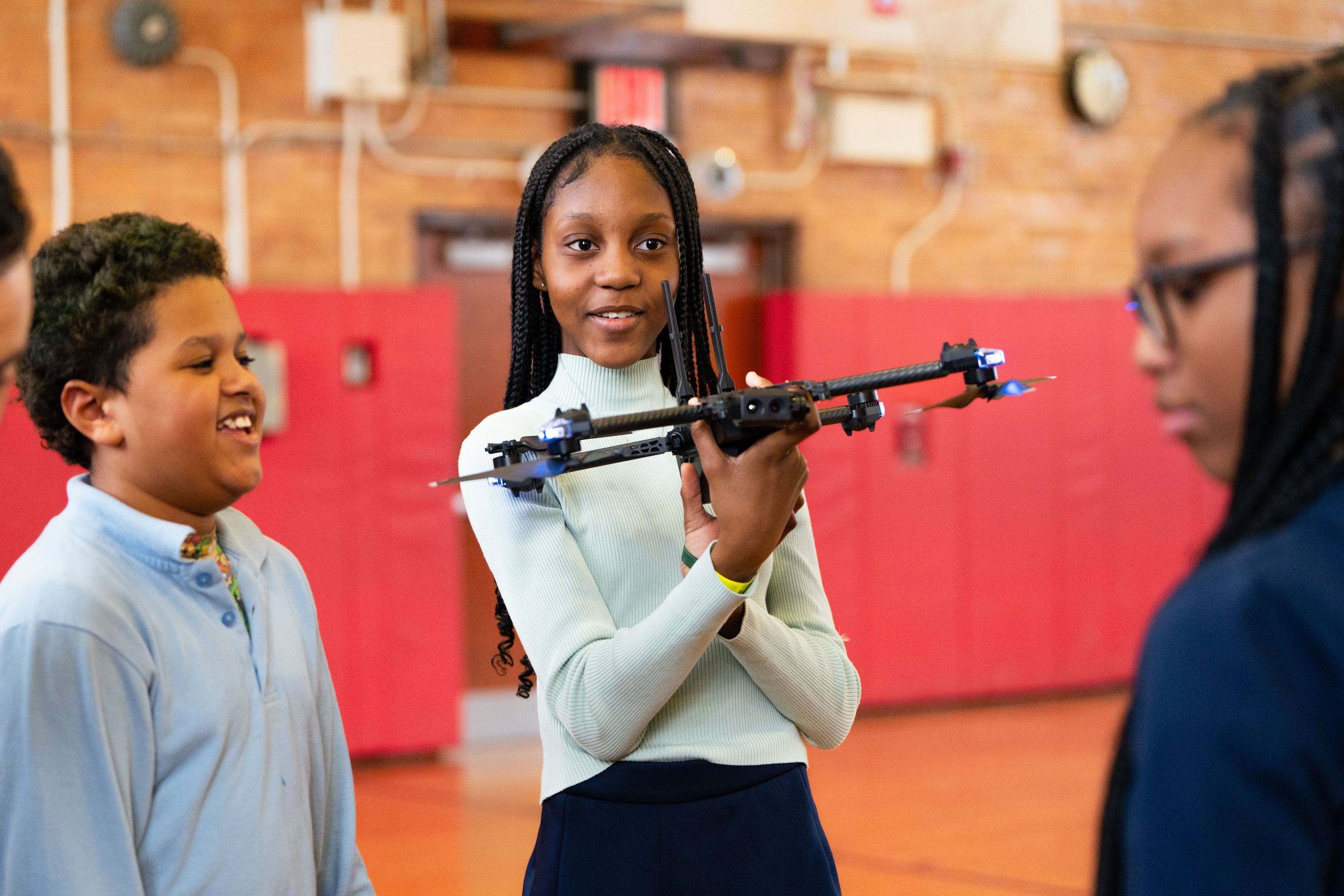Young Women Learn to Fly at Skydio HQ
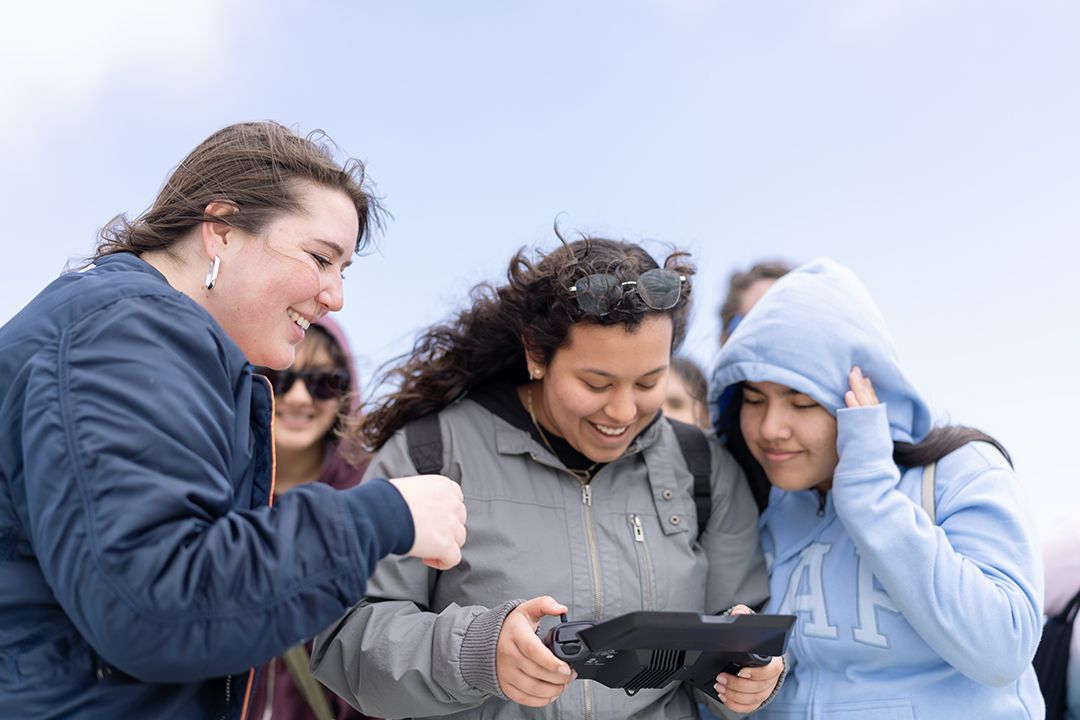
On May 23rd, 60 students from ICA Cristo Rey Academy visited Skydio headquarters in San Mateo, CA for a day of hands-on learning that covered everything from career exploration and how to fly drones, to how Skydio Autonomy and hardware products are built.
At the end of 2022, the Federal Aviation Administration (FAA) reported less than 8% of Remote Pilot licenses were held by women — a substantial gender gap that Skydio aims to bridge through its Youth Fly Days.
ICA Cristo Rey Academy is a vibrant Catholic college preparatory school that empowers girls from underserved communities to become confident young women able to realize their full potential. By introducing the students to many of the female leaders at Skydio, we hope to spark an interest in careers in flight.
The drone industry is expected to grow exponentially over the next decade and exposure is critical for students to learn what is available. In a report titled Drawing the Future by Education and Employers, that surveyed over 20,000 students, it found that “less than 1% [of students] get to meet role models from the world of work visiting their school” and “there [was] a significant mismatch between the career aspirations of children and labor market demands.” This is where professionals have the opportunity to help connect educators and students to emerging industries by making ourselves accessible through proactive community engagement.
Who uses drones and why
To start the day, students first learned how and why drones are being used today – from inspecting critical infrastructure such as bridges and thousands of utility poles, to assisting public safety and departments of transportation.
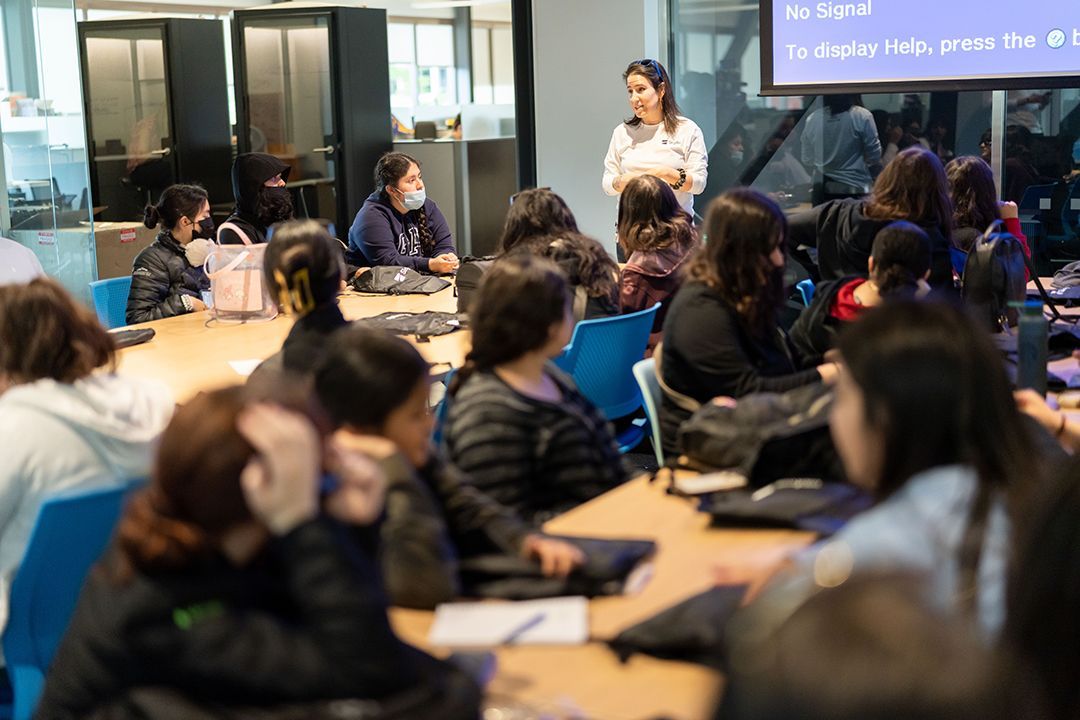
Through a series of role playing exercises, students learned how to identify use cases and where drones could provide assistance. Additionally they learned what’s involved for an organization to incorporate and implement drone programs.
It’s not simply a matter of solely purchasing the equipment. There is also the employee training, drone fleet maintenance, and integration into the company’s workflow to assist employees in fulfilling their jobs.
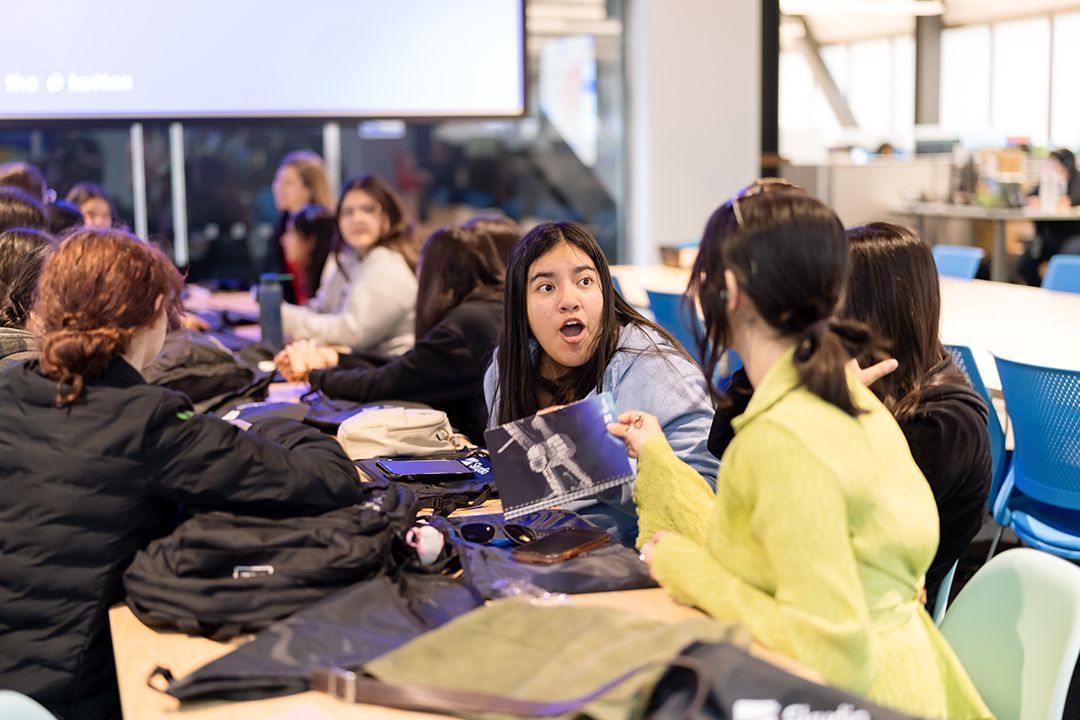
Skydio is committed to creating a more productive, creative, and safe world through autonomous flight. As is often the case with students, this involves having discussions around the impact that using drones irresponsibly can have not only on themselves, but the environment and community around them.
Part of why we always discuss the responsible use of drones with students, is because many students cite the use of drones for spying or following people without their knowledge — something Skydio does not endorse.
How to build a drone from start to finish
Throughout the day, students were split into multiple groups and rotated between different stations to learn about different areas of the company. At the hardware station, students learned about the product development cycle from Skydio’s Test & Reliability Engineer Phoebe Altenhofen, Electronics Design Engineer Snigdha Bommadevara, and Systems Design Engineer Vivian Zhou.
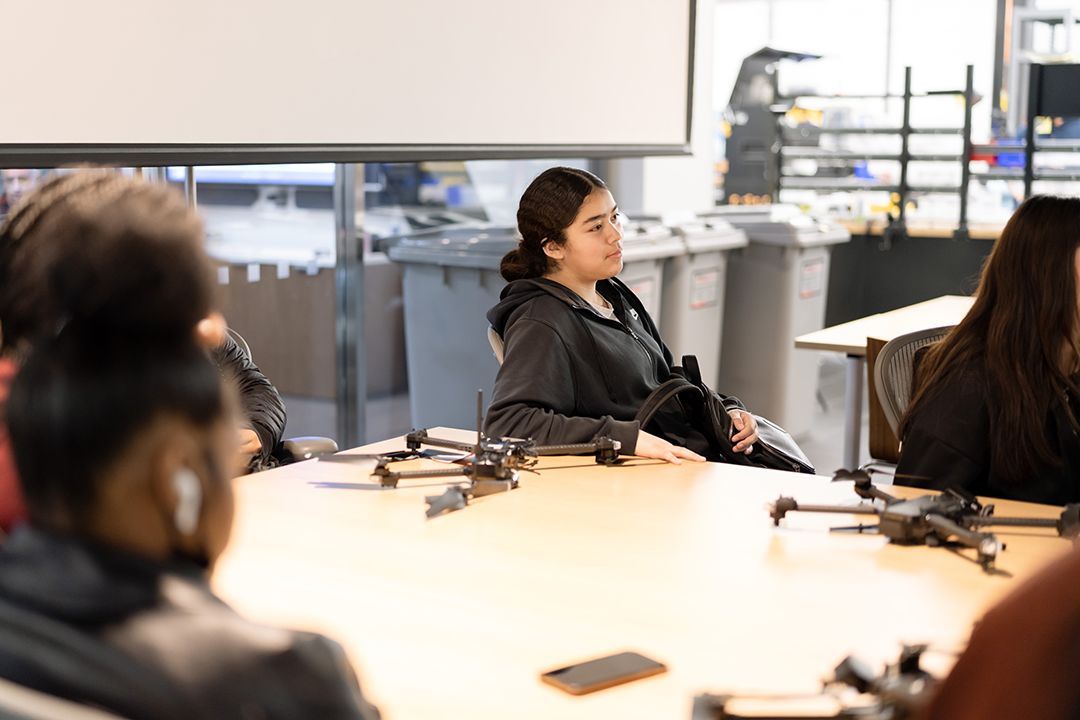
Every product starts with a concept, “what does the product do?” then onto the Prototype phase of “how does it do this?” followed by the Qualitative phase of “how do we make it?”, the Pilot phase of “how do we ship it?”, and finally, full production. Students were surprised at how long the development process could be and all the work that goes into getting the drones ready for full scale production, including the extensive testing that has to be done, such as thorough temperature evaluations in different environments.

How Skydio drones fly themselves
At the autonomy station, students learned how Skydio Autonomy works and how our drones navigate the world around them from our Head of Dock & Remote Ops, Kristen Holtz and Autonomy Engineer, Nikhil Marathe.

To start, students were asked “what is a robot?” This helped to set the foundation for students to understand how prolific robots are in our lives, and on top of that, thinking how many robots use some level of autonomy without us realizing it.
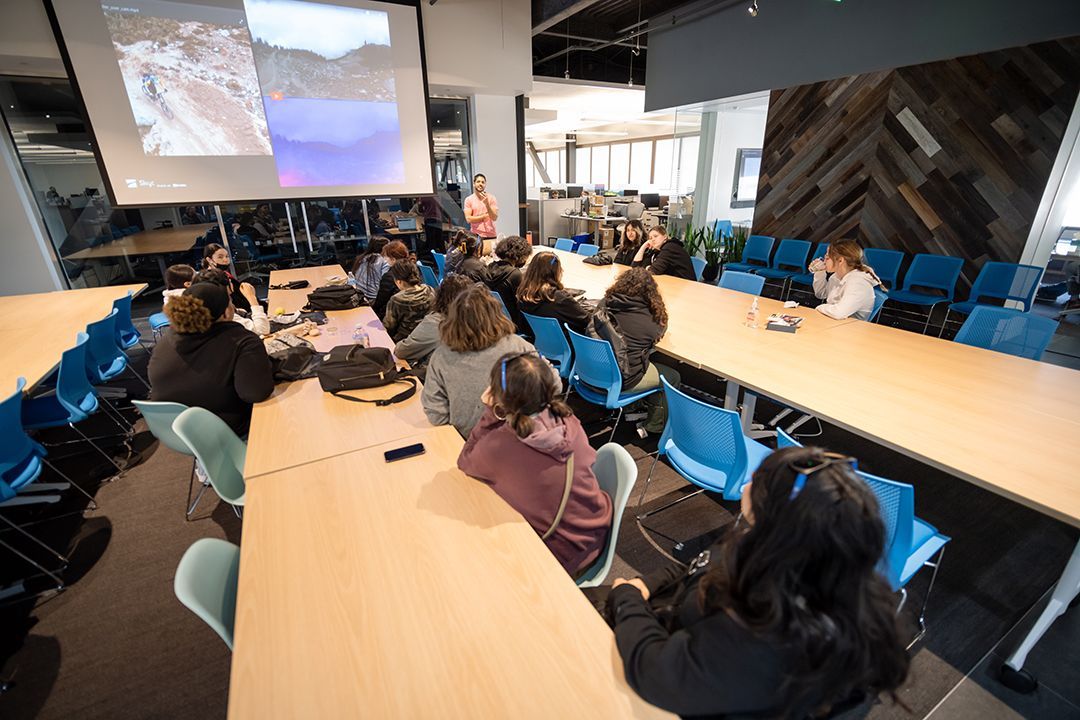
Students were given an overview of how Skydio 2+ uses six navigation cameras to see the world around it, and were surprised to learn that the Skydio 2+ uses a similar computer chip board as the Nintendo Switch. Between the onboard computers and multiple cameras and sensors, Skydio drones are able to fly and avoid obstacles, something the students tested when they got to the hands-on flying demonstrations later in the day.
Flying for the first time
For 36% percent of students, this was their first time flying a drone and for many of the remaining students, this was the first time they flew a drone that didn’t crash. At Skydio HQ in San Mateo, we are fortunate to have a space outdoors that enables our teams to test regularly.
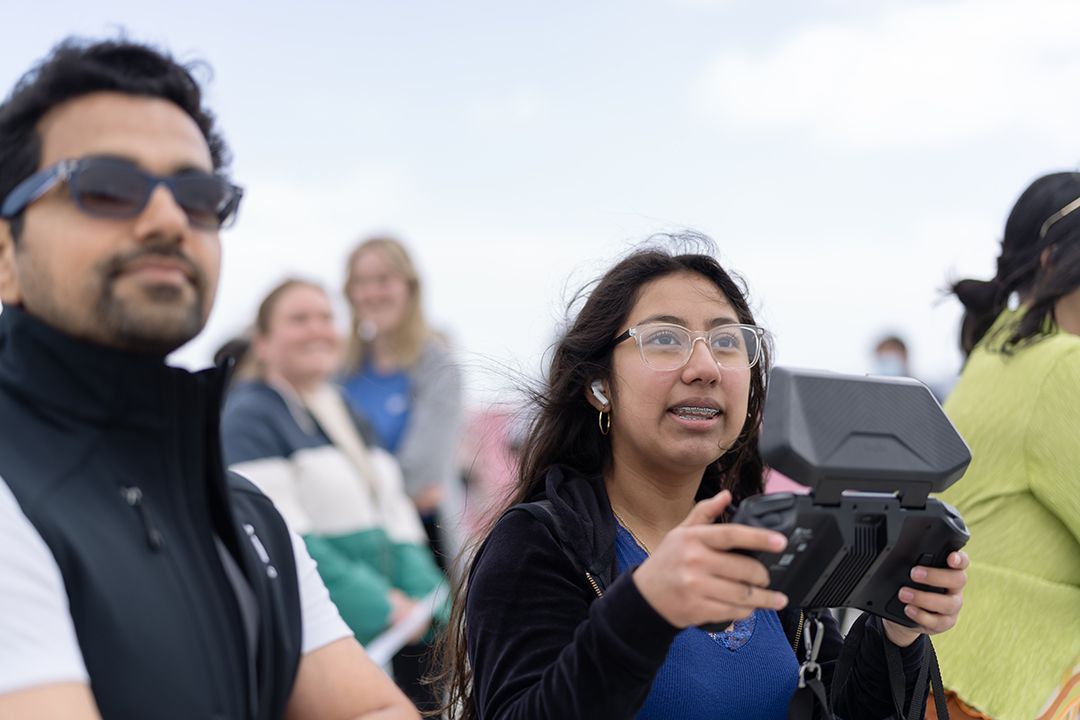
Enduring some rather brisk weather, students learned from Flight Test Engineer Madison Burgin, Wireless Designer Ranul Nautiyal, and Technical Writer Rachael Stopera about their roles while then getting hands on flight time. One of the highlights of the day was seeing the progress of students.
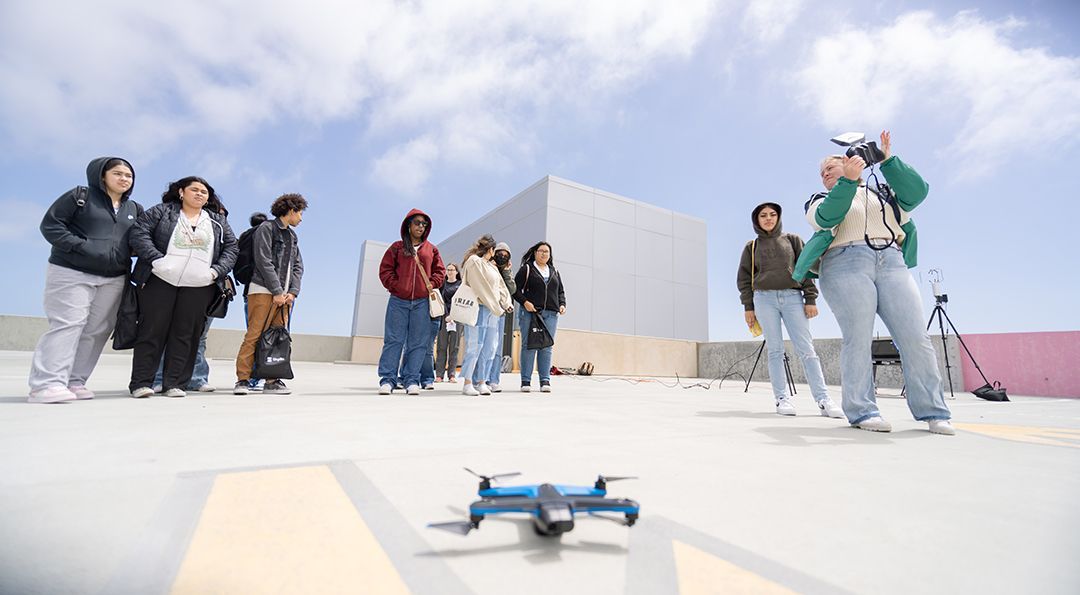
Though some were very apprehensive at first, once they got their hands on the controls they were all smiles while flying. Aside from learning how to manually fly the drones, students were also able to try out Skydio’s Subject Tracking feature where they could try to outrun and lose the drone. Many students were surprised at how well the vehicle followed them and that they couldn’t crash them.
Your life and career are constant exploration
After the morning activities, students enjoyed lunch and boba before listening to a career panel from women at Skydio. A key theme in the overall day was that your career (and life) are not linear and it’s okay to start in one area and then transition to something else.
Many of us at Skydio didn’t start in the fields we are in now, some went in completely different directions after discovering the career they initially went into wasn’t what they expected and others developed skills that compounded from each career leading us to where we are now. We discussed obstacles and the mental growth of who we are today.

As these students start to think about college in a couple years, it was vital we touched on what it was like to transition from student to professional, what were the surprises, but also the benefits. One student asked “how do you come to terms with letting go of your childhood self” as you become an adult and professional. To which we simply responded, you don’t.
That’s one thing we genuinely appreciate about the drone field and working at Skydio, it fosters a sense of childlike enthusiasm when you think about what these products are capable of or even just flying.
Ultimately you don’t have to, nor should you, let go of your childhood self. While having responsibilities like paying bills or supporting family, we still partake in the things that interested us as kids, whether it be learning how to roller skate all over again, playing video games, or taking up new hobbies we couldn’t try when we were younger.
Inspiring the next generation
58% of students expressed a new or increased interest in aviation careers due to their time visiting Skydio. Part of why Skydio partnered with ICA Cristo Rey was due to their required work study program for students where each student spends one day a week and one Friday a month working at a corporate partner such as Skydio.
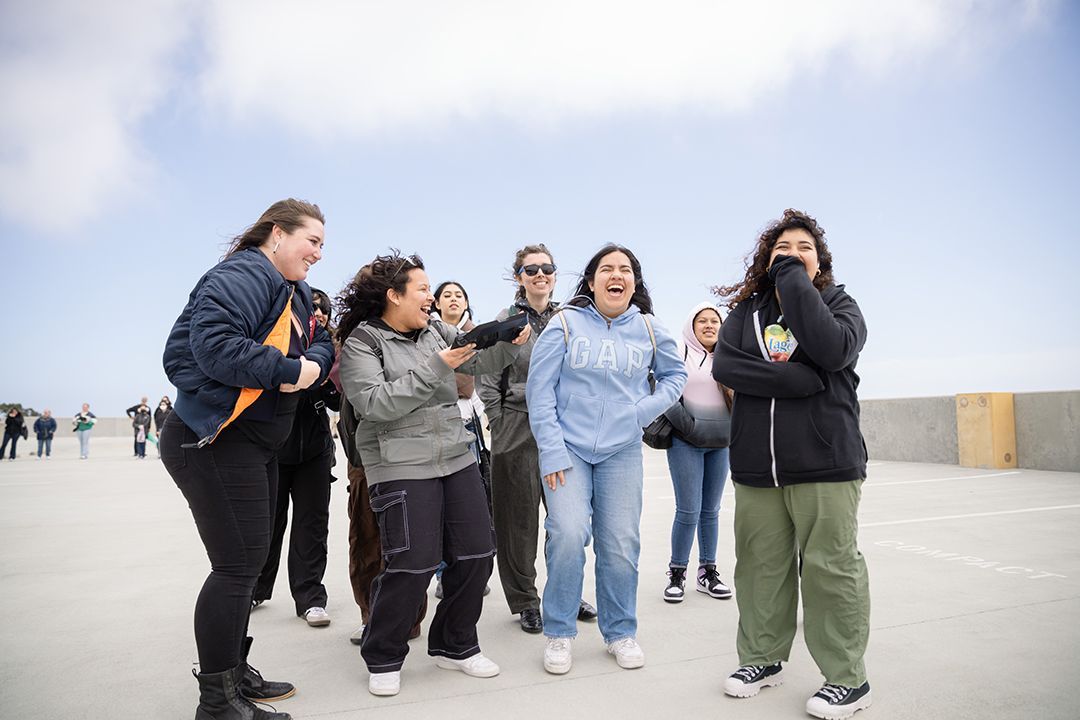
This enables us to provide a continued path for interested students to learn more and gain hands-on experience before getting to college. For the 2022-2023 academic year, Skydio welcomed our first four students from ICA, two seniors and two juniors. The two seniors worked with our hardware Testing & Reliability team and our Prototyping team while one junior worked with our Video Production team and the other our People Operations team.
We look forward to welcoming our next groups of students in the fall for the 2023-2024 school year while continuing to support our current students in their academic careers.

Skydio For All
Skydio For All is an industry-first initiative that utilizes Skydio’s autonomous flight technology to create lasting, positive impact for future generations. The program leverages the full range of Skydio’s resources—from product donations to training and support—to partner with local and global communities. Projects involving STEM education for underserved communities are at the heart of the program, but it also supports other activities, including providing opportunities for veterans, preserving cultural and heritage sites, supporting wildlife conservation, and support of global humanitarian crises such as the war in Ukraine. To learn more about our work, view the recently published 2022 Annual Report.
